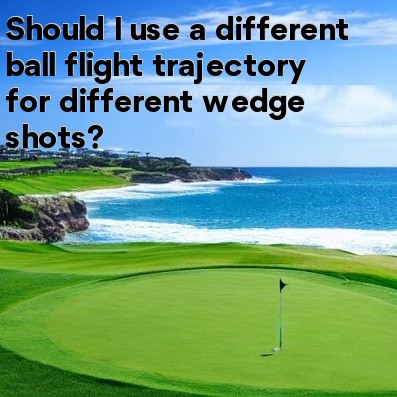
Should I Use a Different Ball Flight Trajectory for Different Wedge Shots?
When it comes to golf, one of the most important aspects is controlling the flight trajectory of your shots. This is especially crucial when it comes to wedge shots, as they require precision around the greens. Many golfers often wonder whether they should use a different ball flight trajectory for different wedge shots. Let's explore this topic in further detail.
Understanding Wedge Shots
- Before delving into the trajectory aspect, it's essential to understand the different wedge shots you have in your arsenal.
- The most common wedges used are pitching wedges, gap wedges, sand wedges, and lob wedges.
- Pitching wedges are generally used for distances between 110-120 yards, while gap wedges cover the range of 90-110 yards.
- Sand wedges are designed for shots out of bunkers or when you need the ball to stop quickly on the green.
- Lob wedges provide high loft and are useful for shots that need to carry over hazards or stop quickly on the green.
Ball Flight Trajectory & Wedge Shots
- The ball flight trajectory refers to the path the ball takes in the air after being struck by the clubface.
- For wedge shots, there are generally two main ball flight trajectories: a higher trajectory and a lower trajectory.
- A higher trajectory allows the ball to land more softly on the green and stop quickly, which is essential for shots with sand wedges and lob wedges.
- A lower trajectory, on the other hand, provides more roll on the green, making it ideal for shots with pitching wedges and gap wedges.
Factors Affecting Ball Flight Trajectory
Several factors can influence the ball flight trajectory of wedge shots:
- Club Selection: Choosing the appropriate club based on the shot distance and desired trajectory is crucial.
- Posture and Stance: Adjusting your posture and stance can help you control the flight trajectory. For higher trajectories, you may want to open your stance and use a more upright posture.
- Clubface Angle: The angle at which you strike the ball with the clubface can determine the trajectory. For higher trajectories, you may want to open the clubface slightly.
- Swing Speed: The speed at which you swing the club can also impact the trajectory. Slower swings tend to produce higher trajectories.
The Importance of Practice
Experimenting with different trajectory shots is essential to understand the nuances of each wedge and develop your skills. It's crucial to spend time on the driving range and around the practice greens to fine-tune your wedge shots.
Final Thoughts
So, should you use a different ball flight trajectory for different wedge shots? The answer is, it depends. You need to assess the conditions, shot distance, and desired outcome to determine the most appropriate trajectory. Experimentation and practice will help you develop the confidence and skill to control your wedge shots effectively.
Remember, golf is a game of precision and practice. The more you familiarize yourself with the different aspects of your wedges, including ball flight trajectory, the better equipped you'll be to tackle various shot scenarios on the golf course.





